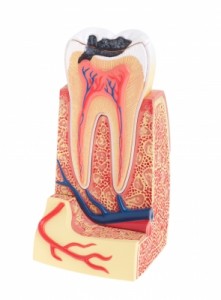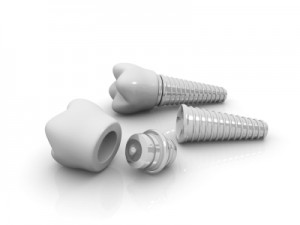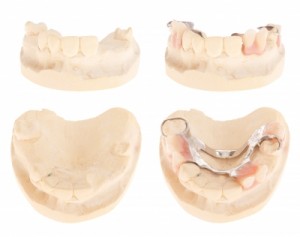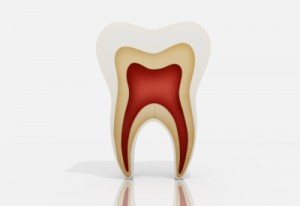Restorative Procedures
Fillings
Composite Fillings
A composite resin is a plastic, tooth colored filling material that is used to fill teeth after removal of decay. The filling is placed in the tooth and cured(hardened) with the help of an LED curing light. It is then finished and polished until smooth and the bite is right. These fillings can be used on both front as well as back teeth. They are also referred to as bondings when they are used to correct spaces between teeth or as a facing for discolored and chipped teeth.
Amalgam Fillings
An amalgam filling is a silver colored filling that has been used successfully in dentistry for many years to restore decayed teeth. It is usually used only on posterior/back teeth.
Root Canal Treatment
 The hard exterior of the tooth encases and protects the living tissue called pulp. When the pulp is affected because of decay or trauma, tooth discomfort or an infection ensues. In order to relieve the pain, cure the infection and save the functionality of the tooth, a root canal treatment has to be done.
The hard exterior of the tooth encases and protects the living tissue called pulp. When the pulp is affected because of decay or trauma, tooth discomfort or an infection ensues. In order to relieve the pain, cure the infection and save the functionality of the tooth, a root canal treatment has to be done.
Root canal treatment involves cleaning out the offending bacteria from the center of the tooth and sealing the tooth with an inert filling material called gutta percha(it is a biologically inert, rigid natural latex produced from the sap of the Palaquium tree). A crown is thereafter placed on the tooth to protect the remaining natural tooth structure.
Crowns
A crown is a cap or cover that is placed on a tooth whose functional and structural integrity has been compromised by caries,fracture or a large filling.
Why does a tooth need a crown?
- Natural tooth structure is cracked or fractured
- Natural tooth is weakened markedly by caries/decay
- Coverage for a dental implant
- Tooth has been root canal treated
- Large filling is present on the tooth with not much of the natural tooth structure remaining which compromises chewing capacity.
Crown Materials
Crowns can be made of different materials.They can be all metal,porcelain fused to metal,all porcelain, or zirconia.In the all metal and porcelain fused to metal crowns,our office uses the high gold content and nickel free metal alloy.
Crown Appointment
The crown procedure is done in two visits.The first visit is the longer one when the tooth is prepared to receive the crown, a mold of the tooth is taken and sent to the lab. A temporary crown is cemented in with temporary cement at this appointment so that the tooth is functional,with some precautions. After two weeks ,there is a second shorter appointment during which the temporary crown is removed and the permanent crown is cemented or bonded onto the natural tooth.
What is the lifespan of a crown?
The lifespan of a crown depends on several factors such as:
- Amount of wear and tear the crown is exposed to
- The efficacy of home care by the patient.
- Personal habits like grinding, clenching, chewing on ice
Extractions
Teeth need to be extracted/removed when they cannot be restored to proper function. Irrepairable decay or cracks, extensive gum disease, inability to cure infection with root canal treatment, traumatic injury resulting in irreversible damage to the tooth are some of the circumstances that warrant the removal of teeth. Some teeth have to be extracted by an Oral Surgeon due to the complexity in their anatomy,current condition or patient’s medical history.
Wisdom teeth or third molars are teeth that are routinely extracted if they are unfavorably positioned (impacted)within the jaw and/or due to lack of space in the mouth. Most of the wisdom teeth extractions are referred to an Oral Surgeon,depending on the complexity of the case.
Occasionally, some deciduous(baby) teeth have to be extracted if they do not exfoliate(fall out) on time.
Treatment Options for Missing Teeth
The loss of a tooth can result in problems with the bite,chewing efficiency and speech. There is also the possibility of the adjacent and opposing teeth drifting into the empty space thereby further affecting the bite and health of the surrounding gum tissue.It is therefore important to replace missing teeth in order to restore the mouth to maximum efficiency.
Luckily there are various treatment options available to replace missing teeth.
Implants
 Implants are considered the first in line in standard of care for replacement of missing teeth.
Implants are considered the first in line in standard of care for replacement of missing teeth.
An implant is a titanium post that acts as the root portion of the tooth.It is placed by an oral surgeon or periodontist, either at the time of extraction of the natural tooth or at a later date.Once the tissue heals ,the general dentist then places a crown on the implant.
If the area of the missing tooth is missing a lot of bone or is close to the sinus, then the Oral Surgeon or periodontist will recommend grafting some additional bone to provide adequate support for the implant.
After implant placement by the specialist,there is a healing period anywhere from 10 weeks to three months before the crown can be made.Thereafter the material choice and time frame of the crown appointments is similar to natural tooth crowns.
Advantages of an implant
- New bone growth occurs around the implant
- Daily maintenance for the patient is just like that of the natural teeth
- The tooth structure of adjacent teeth does not have to be modified in any way
- Bone height is maintained in the implant area as well as around that of the adjacent teeth
- With proper care and maintenance and absence of risk factors, it serves its function very well for a long time.
Risk Factors that might affect or prevent placement of an implant
- Smoking
- Diabetes-causes slower wound healing
- Age- there might be other medical conditions complicating placement of implant.
- Severe aggressive periodontal disease.
Bridges
The second most commonly used method to replace one or more missing teeth is a bridge.As its name suggests ,a bridge is built by taking support from teeth or implants on either side of the missing space.These supporting teeth are called abutments and serve as anchors for the bridge. A replacement tooth, called a pontic, is attached to the crowns that cover the abutments. They span the space where the teeth are missing.Bridges are cemented to the natural teeth or implants surrounding the empty space.As with crowns, you have a choice of materials for bridges. The appointment time frame is similar to that of crowns as well.
Partials
 The third option to replace missing teeth is with a partial denture (if few teeth are missing) or complete denture (if all the teeth are missing).This is not a fixed or cemented replacement.It is removable and must be taken out at night to allow the tissues to relax.The procedure usually involves about three appointments and has a lot of co ordination to be done with the dental lab.
The third option to replace missing teeth is with a partial denture (if few teeth are missing) or complete denture (if all the teeth are missing).This is not a fixed or cemented replacement.It is removable and must be taken out at night to allow the tissues to relax.The procedure usually involves about three appointments and has a lot of co ordination to be done with the dental lab.
Please talk to our clinical dental team, if you have any questions regarding the procedures and our business team for any financial and insurance queries.

